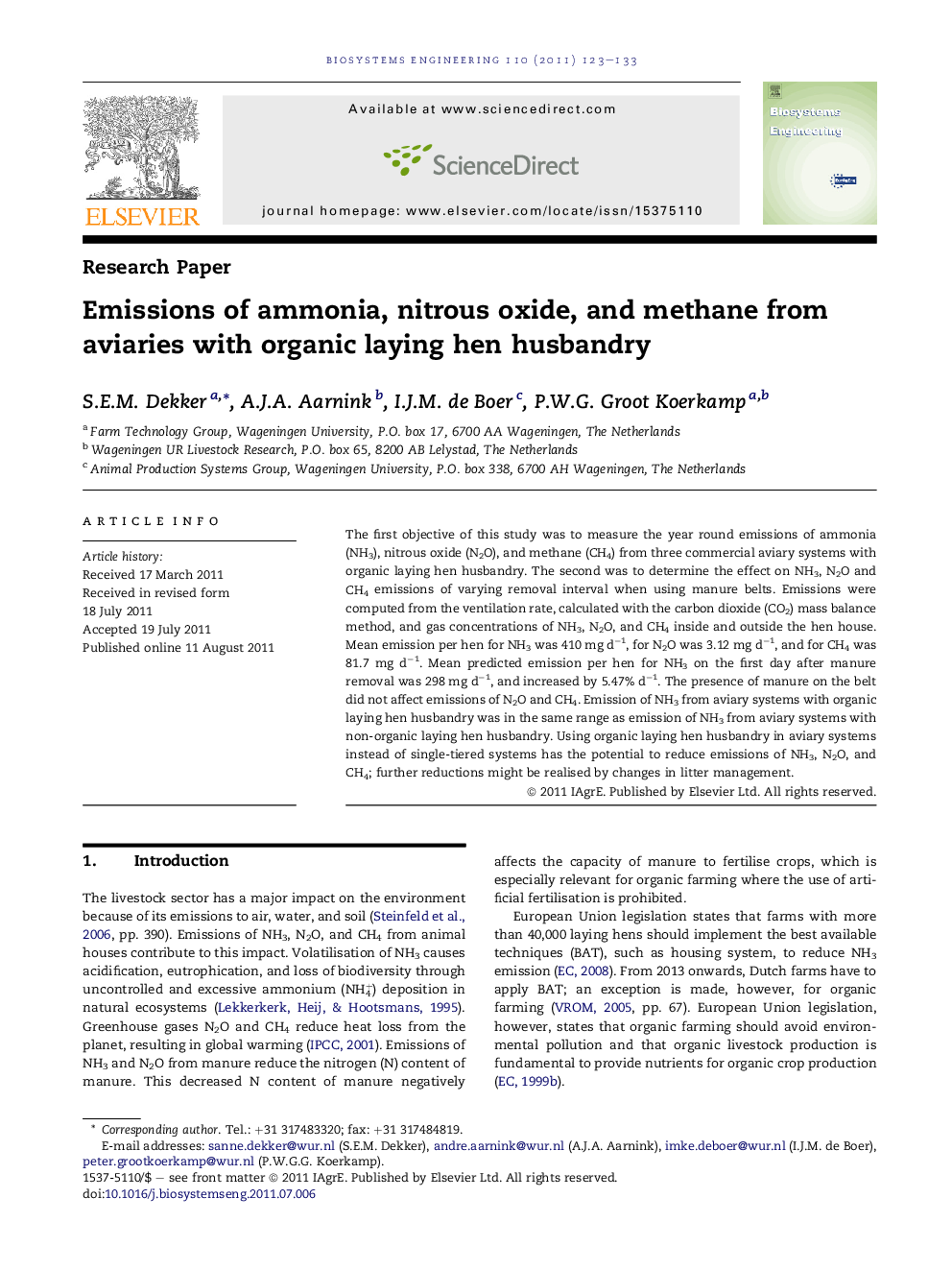| Article ID | Journal | Published Year | Pages | File Type |
|---|---|---|---|---|
| 1711620 | Biosystems Engineering | 2011 | 11 Pages |
The first objective of this study was to measure the year round emissions of ammonia (NH3), nitrous oxide (N2O), and methane (CH4) from three commercial aviary systems with organic laying hen husbandry. The second was to determine the effect on NH3, N2O and CH4 emissions of varying removal interval when using manure belts. Emissions were computed from the ventilation rate, calculated with the carbon dioxide (CO2) mass balance method, and gas concentrations of NH3, N2O, and CH4 inside and outside the hen house. Mean emission per hen for NH3 was 410 mg d−1, for N2O was 3.12 mg d−1, and for CH4 was 81.7 mg d−1. Mean predicted emission per hen for NH3 on the first day after manure removal was 298 mg d−1, and increased by 5.47% d−1. The presence of manure on the belt did not affect emissions of N2O and CH4. Emission of NH3 from aviary systems with organic laying hen husbandry was in the same range as emission of NH3 from aviary systems with non-organic laying hen husbandry. Using organic laying hen husbandry in aviary systems instead of single-tiered systems has the potential to reduce emissions of NH3, N2O, and CH4; further reductions might be realised by changes in litter management.
► Housing in aviaries reduces NH3, N2O, and CH4 emission in organic hen husbandry. ► Emission of NH3 and CH4 organic aviaries equalled non-organic. ► Emission of N2O from organic aviaries was lower than non-organic. ► Daily removal of belt manure reduces emission of NH3 from the laying hen house. ► Presence of manure on the belt did not affect emissions of N2O and CH4.
